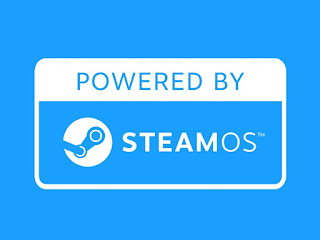Valve, the company behind the massively popular Steam gaming platform, has dropped tantalizing hints that more third-party devices running SteamOS are in development. During a recent interview with industry press, a Valve spokesperson suggested that the Linux-based operating system, which powers the Steam Deck handheld, could soon expand to a broader range of hardware from external manufacturers. This move could significantly widen the reach of SteamOS and challenge Windows’ dominance in PC gaming.
“We’re seeing growing interest in SteamOS from hardware creators,” the spokesperson said, without naming specific partners. “Our goal has always been to give players more choice in how and where they play their Steam libraries, and that includes supporting devices beyond the Steam Deck.”
The SteamOS Revolution
SteamOS, first launched in 2013, was designed as a living-room-friendly OS for Valve’s short-lived Steam Machines initiative. However, its resurgence came with the 2022 release of the Steam Deck, which showcased the operating system’s potential as a portable gaming powerhouse. Optimized for performance and tailored for seamless integration with Steam’s vast game library, SteamOS 3.0 (the Deck’s iteration) has won praise for its Proton compatibility layer, which allows thousands of Windows-only games to run smoothly on Linux.
Valve has since open-sourced key components of SteamOS, encouraging developers and hardware makers to experiment with the platform. Now, the company appears ready to take the next step: licensing SteamOS to third-party manufacturers for devices like handheld PCs, compact desktops, or even gaming-focused laptops.
What’s Coming Next?
While Valve hasn’t confirmed specific products, industry analysts speculate that brands like ASUS, Ayaneo, or GPD could be exploring SteamOS integrations. Such devices might offer alternatives to the Steam Deck, catering to niche markets with features like larger screens, modular designs, or enhanced performance.
For gamers, this could mean more flexibility. Instead of being locked into the Steam Deck’s hardware, users might soon choose from a range of devices optimized for different needs—whether it’s ultra-portability or 4K gaming on a TV. Valve’s SteamOS page already provides resources for developers, hinting at a quiet push to grow the ecosystem.
Why Third-Party Hardware Matters
Third-party adoption could solve one of SteamOS’s biggest hurdles: scalability. While the Steam Deck is a critical darling, its hardware limitations and supply constraints have left room for competitors. By partnering with other manufacturers, Valve could accelerate SteamOS adoption without bearing the full burden of hardware production.
“[SteamOS] gives manufacturers a turnkey solution,” said a tech analyst familiar with Valve’s strategy. “They get a pre-optimized OS, access to Steam’s 130 million active users, and a foothold in the booming handheld PC market.”
Challenges and Opportunities
Not everything is straightforward. SteamOS’s reliance on Proton compatibility means some games still require tweaks to run perfectly. Hardware fragmentation could also lead to inconsistent user experiences if devices vary too widely in performance. Valve may need to implement certification programs, similar to Xbox or PlayStation, to ensure quality control.
Still, the potential upside is enormous. A thriving SteamOS ecosystem could pressure Microsoft to improve Windows for handheld gaming devices, while giving consumers alternatives to walled gardens like macOS or ChromeOS.
Where to Look Now
For those eager to explore current SteamOS devices, third-party options like this upcoming handheld are already generating buzz on forums. Meanwhile, Valve continues to update its SteamOS tools for developers, suggesting a steady drumbeat of news in 2024.
As the lines between consoles, PCs, and mobile devices blur, Valve’s bet on an open, flexible OS might just redefine where—and how—we play.

